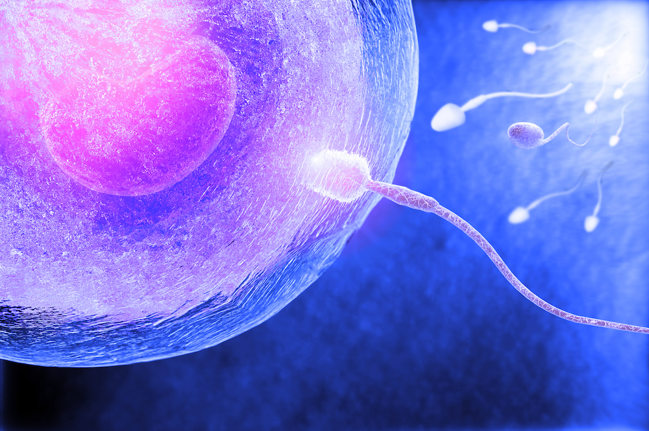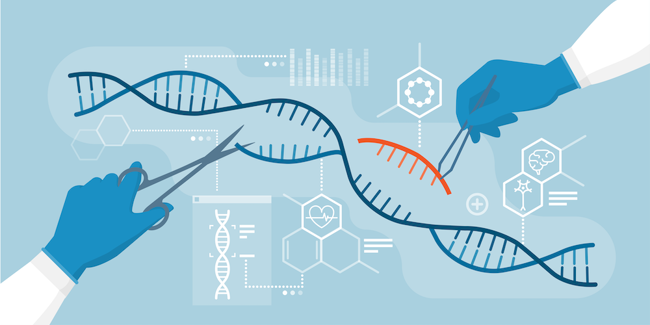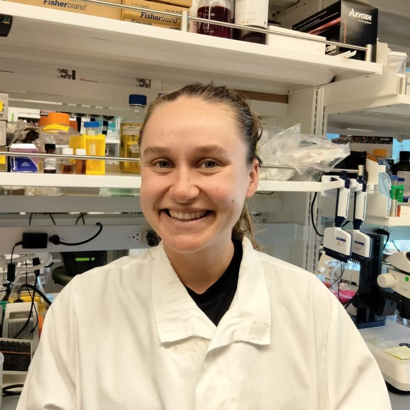
Is there any way for a gay couple to have a child that is their own?
September 18, 2023

- Related Topics:
- Reproduction,
- LGBTQ+,
- Futuristic science,
- Developmental biology,
- Genetic engineering
A college student from Brazil asks:
"Nowadays, is there any way for a gay couple to have a child that is their own?"
Not right now, no. However, scientists have made a lot of progress in this area during the past couple of years!
Scientists have been able to make mouse embryos from two female parents or two male parents. Unfortunately, these techniques have not had high rates of success so far. But maybe in the next couple of decades some of these tricks and techniques could be applied to humans!
Both egg and sperm are needed to make an embryo
In mammals like us, an egg and a sperm need to come together to create offspring. When the egg and sperm combine into one new cell, it then starts dividing as an embryo. We can’t just combine two eggs together, or two sperm.
Scientists have even tested this in the lab. When they tried combining two eggs together from mice, none were able to develop.1 The same is true for two sperm.
So how are eggs and sperm different? Why do we need one of each?
The difference isn't due to DNA sequences. Eggs and sperm both have half a set of DNA. And there aren't any major differences in the type of DNA that they carry (though some sperm carry a Y chromosome).
The difference comes down to something called "imprinting". Genomic imprints are small chemical tags on DNA that “stamp” certain genes off. Imprinting doesn't change any DNA sequences, but it does change how that DNA can be used.
Eggs and sperm have different genomic imprints. When an egg and a sperm come together, they have complementary imprinting patterns. A gene that was turned "off" in sperm might be "on" in the egg. It would even out in the new embryo.
Combining two eggs or two sperm would lead to an embryo with misaligned imprinting tags. Some genes would have two copies turned off and some genes would have two copies turned on. Since having specific amounts of every gene is crucial, this means the embryo can't survive.
However, scientists have made embryos from same sex mice a couple of different ways! So, how did they get around the imprinting problem?

Making sperm from female cells
In 2004, scientists first created mice with two moms (as discussed in this previous Ask a Geneticist). However, the process was very inefficient. Only 2 embryos out of 457 survived.
In 2018, scientists from China used a different method that had a success rate closer to 1 in 7 embryos. The process was risky and time intensive. It involved editing the DNA of female mouse cells to become more like sperm by changing the genomic imprints. Then, the edited cells were combined with eggs from another mouse. DNA editing is not currently a possibility for human patients.2
The success rate was low, but it is possible to make healthy embryos from female cells. However, it is not likely to translate directly to human patients due to the riskiness of DNA editing and the low chance of success.

Making eggs from male cells
Those same scientists in 2018 did something similar to create mice with two male parents. However, it was also very inefficient: only 1 in 50 embryos survived until birth. And it was even more complicated, as it required an egg donor as well.
However, researchers made huge progress with this recently! Two major breakthroughs laid the foundation for this work.
In 2020, scientists from Japan figured out how to grow eggs in a lab dish with a specific combination of chemicals. Using these chemicals, scientists can change stem cells into healthy eggs.3,4
Then in 2023, that same group of scientists made another breakthrough: they figured out how to make male cells more female-like. Male cells are a little different from female cells: most males have an X and Y chromosome, while most females have two X chromosomes. To get around this, the scientists grew cells from a male mouse until some of them randomly lost the Y chromosome. And then they treated those cells with a chemical that caused some of them to duplicate the X chromosome. Eventually, they ended up with cells containing two X chromosomes, just like female mice!5
Then the scientists made these cells into eggs using the recipe they developed to make eggs in a dish from stem cells. Then they fertilized these eggs from male mice with sperm from another male and made embryos! This had a relatively low rate of success, as only 1 in 90 embryos grew into healthy, adult mice.5
What about in humans?
We’ve gone over the recent advancements in mice having both biological parents of the same sex — but where does this stand in humans? As I mentioned, there are lots of scientific tricks needed to make this work in mice: gene editing, making stem cells into eggs, and making male cells have two X chromosomes. All of these tricks could theoretically be done in human cells.
However, even when done correctly in mice, the success rate is really low. Also, it is a slow and difficult process, even in mice. Therefore, it is too slow and not safe to try the process out in human patients right now.
However, in-vitro gametogenesis (IVG), which involves making human eggs and sperm from any cell in the body by first turning them into stem cells, is entering into the realm of possibility! IVG has the potential for infertile couples to make eggs and sperm from any cells.
If that is possible, then gay couples being able to have biological children on their own might be on the horizon. However, getting that process to work efficiently is still a long way off.
More scientific advancements on making embryos from same sex couples is probably happening as you read this! Scientists have made a lot of progress, but it will be many years until the technology is ready for human use.
Read More:
-
MedlinePlus: What is genomic imprinting?
-
Nature News: Healthy mice from same-sex parents have their own pups
-
Nature News: Scientists create eggs from male cells
-
NPR on IVG: Creating a sperm or egg from any cell? Reproduction revolution on the horizon
-
Ask a Geneticist: Is there any way for a gay couple to have a child that is their own? (2014)
-
Ask a Geneticist: Since scientists recently made a mouse with two moms, can two women have children now? (2004)

Author: Angela Pogson
When this article was published in 2023, Angela was a PhD candidate in the Department of Developmental Biology, working in Anne Brunet’s lab studying age-related protein aggregation in neural stem cells. She wrote this answer while participating in the Stanford at the Tech program.
 Skip Navigation
Skip Navigation
